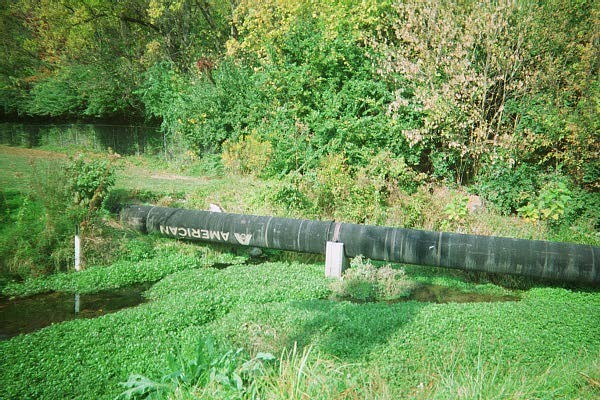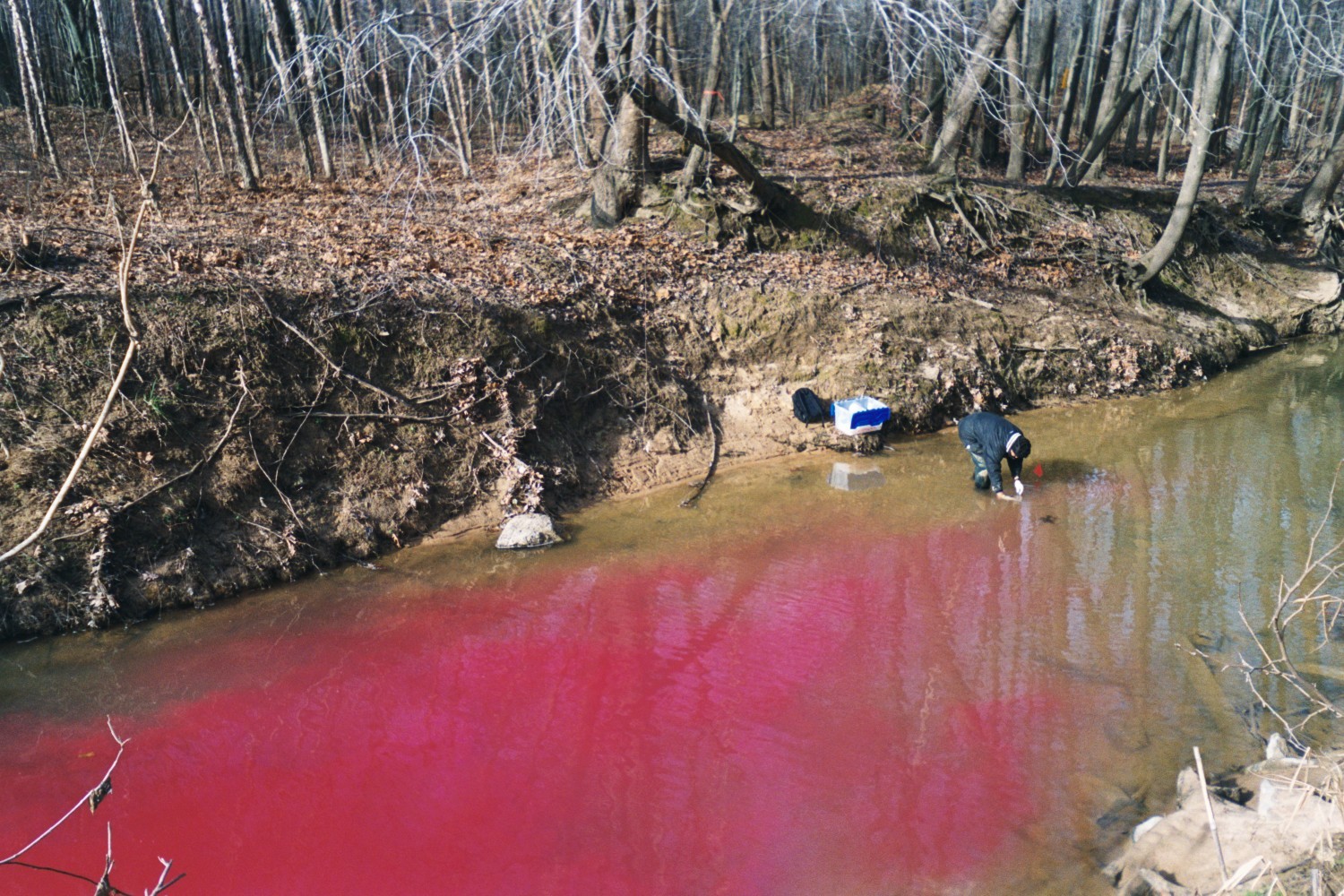Research in Hydrogeology
Research in hydrogeology in the Department of
Earth and Environmental Sciences broadly includes field-based studies and
mathematical modeling of ground-water flow, mass transport, and reactions in
the subsurface. Past and present research projects include:
Controls on
ground-water composition in regional sedimentary aquifers
Lower Wilcox Aquifer: In the northern Gulf Coastal Plain of
High Plains (Ogallala) Aquifer: The High Plains aquifer is the largest aquifer in the
(Left: Abhijit Mukherjee
uses a colorimetric technique to measure the concentration of ferrous iron in
the Canning public-supply well, June 2004.
Right: Sunil Mehta collects brine from an oil well in
Sediment and pathogen transport in
Inner
Groundwater flow along bedding planes and fractures in limestone results in
dissolution of the rock, evolution of conduits, and development of an
integrated surface and subsurface drainage network. Consequently, subsurface transport
of sediment and pathogens can occur as a result of storms. With colleagues in Plant
and Soil Science, Civil Engineering, and the Kentucky Geological Survey, Todd
McFarland (MS 2003), Tom Reed (MS 2006), and James Ward (PhD 2008) studied discharge,
water chemistry, pathogen concentrations, and sediment characteristics for two
springs (one mainly urban, one rural) in Woodford County, Kentucky. Microbial
results are consistent with differences in land use. Suspended sediment
consists mainly of silt-sized detrital quartz, and the
urban spring appears to respond more rapidly to precipitation than the rural
spring does.
 (Blue Hole spring, May 2002.)
(Blue Hole spring, May 2002.)
Ground-water/surface-water interactions
in the Gulf Coastal Plain of western Kentucky
Paducah Gaseous Diffusion Plant (PGDP): Contaminated groundwater from the
U.S. Department of Energy's Paducah Gaseous Diffusion Plant (PGDP), a Superfund site
in McCracken County, Kentucky, discharges via springs to Little Bayou Creek,
which flows through a state wildlife management area. Eric Wallin
(MS 1998), Abhijit Mukherjee
(MS 2003), and Danita LaSage (PhD 2004) quantified
spatial and temporal variability in seepage along Little Bayou Creek. Josh
Sexton (MS 2006) constructed a conceptual stratigraphic
model of the site. Locations of springs appear to be
controlled by stratigraphic heterogeneities, stream channelization,
and possibly faults. Spring-flow rates and trichlorethene
(TCE) concentrations in the stream tend to decrease from May through January,
then rebound.
Ledbetter Creek: With colleagues at
(Left: Andrea Hougham [undergraduate assistant]
and Danita LaSage collect samples from a sand boil
[submerged spring] in Little Bayou Creek, May 2000.
Right: Danita and Andrea monitor water levels in piezometers
in Ledbetter embayment, May 2000.)
Natural attenuation of trichloroethene in ground water and surface water
Monitored natural attenuation can be an option for remediating groundwater
contamination, particularly for chlorinated hydrocarbons such as TCE, a common
solvent and suspected carcinogen. David Butler (MS 1999) and Nadege Etienne (MS [Plant and Soil Science] 1999)
identified methanogenic bacteria, which have been
shown to be capable of degrading TCE at other sites, in soils and sediments
like those bounding the contaminated regional gravel aquifer in the vicinity of
PGDP. However, biodegradation was insignificant in batch cultures over periods
as long as 10 months, perhaps because of a lack of nutrients or a lack of
acclimation to TCE. Abhijit Mukherjee
(MS 2003) and Danita LaSage (PhD 2004) found that volatilization
and dilution limit TCE concentrations in Little Bayou Creek.
 (Abhijit Mukherjee collects
samples during Little Bayou Creek tracer test, January 2002.)
(Abhijit Mukherjee collects
samples during Little Bayou Creek tracer test, January 2002.)
Return
to Fryar home page
Return to UK Earth
and Environmental Sciences home page
Updated
27 August 2008